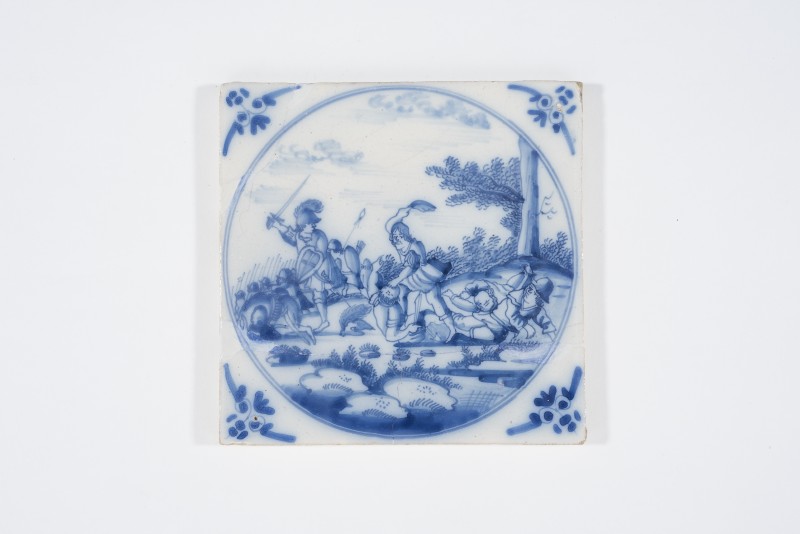Quadratische Fliese mit einer von zwei konzentrischen Kreisen eingefassten Darstellung Simsons, der mit dem Kinnbacken eines Esels 1000 Philister erschlägt: in der Mitte Simson, mit dem rechten Arm weit ausholend, um einen am Boden liegenden Philister zu erschlagen. Rechts von ihm zwei tote Philister. Links das flüchtende Heer der Philister. Der Himmel mit Wolken, in den Ecken Ochsenkopfmotive.
Die Fliese in vier Teile zerbrochen und restauriert. Die Ausbrüche an den Bruchkanten retuschiert. Nagelspuren in der oberen rechten und der unteren linken Ecke.
Erwerbung unbekannt (alter Bestand)
en

